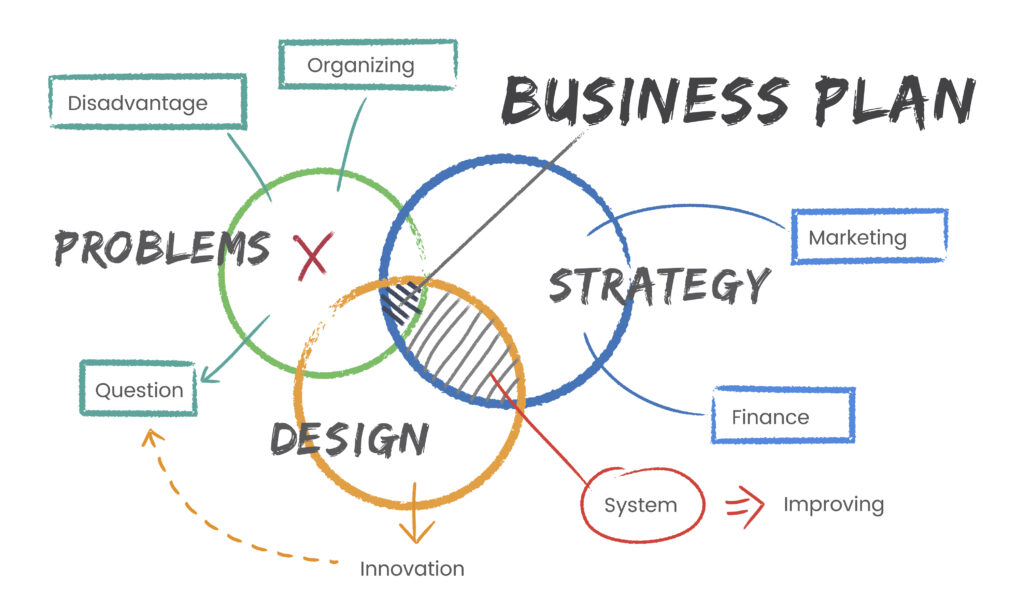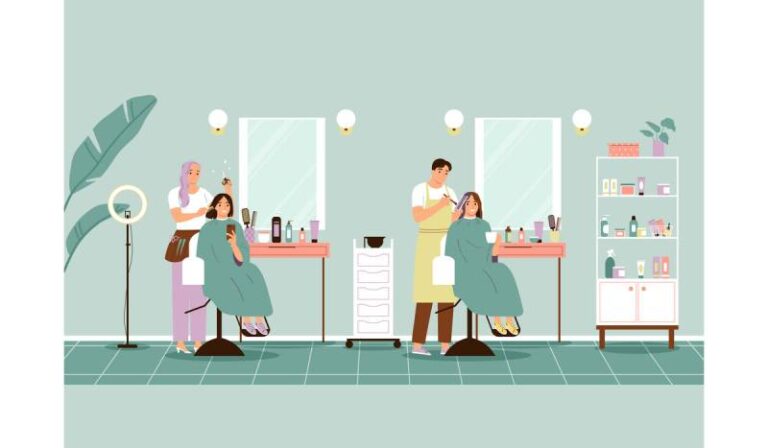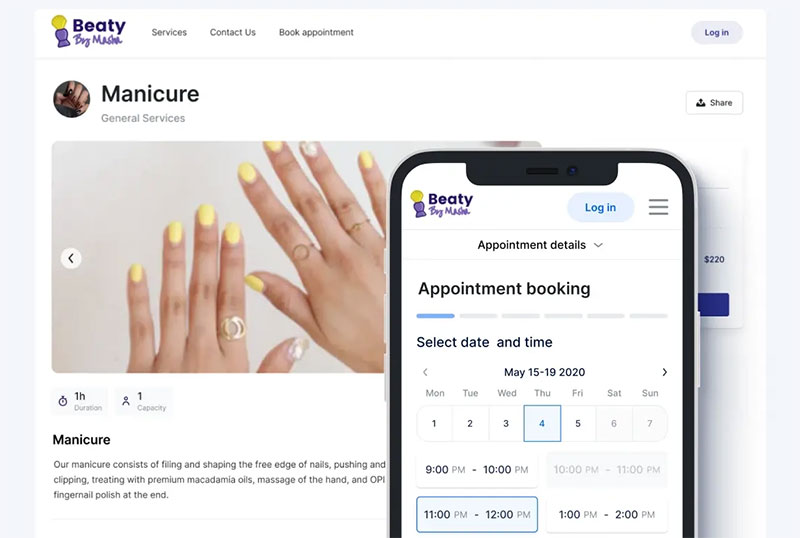The beauty salon business plan is like your secret weapon for effective management and planning. It’s the ultimate tool that helps you and your team develop smart strategies and stay on top of things.
Many in the industry think that all you need is sheer motivation to succeed. Well, while having a strong passion for your salon is crucial, motivation alone won’t cut it. There are other super important factors you should consider if you want your business to thrive. And that’s where a killer salon business plan comes in handy.
This guide is going to walk you through the process of writing a document that perfectly fits your operational needs. You’ll also dive into all the different elements that make up a business plan and see why they’re so important for your salon.
But first, let’s see why having a thorough business plan is an absolute must.
Why You Need a Business Plan
A business plan is like the ultimate snapshot of your salon’s identity. It gives you the data on everything, from your mission statement and business model to where you fit in the market and who your target customers are. And let’s not forget about the financial aspect and your goals – it’s all in there.
A business plan is not just a boring piece of paper. It’s like a detailed map that’ll guide you through the wild world of the salon industry.
One of the best things about having a business plan is that it helps you keep tabs on how you’re doing. It’s like having a built-in performance tracker that lets you make those necessary tweaks with precision. What’s more, it’s not just for your own benefit. Potential investors find it useful too. They use your plan to figure out what you’re all about and if you’re worth investing in.
Keep in mind that this plan isn’t set in stone. It’s a living, breathing document that grows with your salon. It adjusts to the ever-changing market and keeps up with your goals, so you can make informed decisions along the way.
The Different Types of Beauty Salons
If you are starting a new salon, you should know where to position your business within the industry. There are many existing salon business types according to their beauty products and service offerings:
- Full-Service Salons: These are the jack-of-all-trades in the beauty industry. Full-service salons offer a wide range of services, including haircuts, styling, coloring, manicures, pedicures, facials, waxing, and more. They aim to provide a one-stop shop for all your beauty needs.
- Hair Salons: As the name suggests, these salons specialize in all things hair-related. From trendy haircuts and styling to hair coloring, highlights, extensions, and treatments, hair salons are the go-to places for fabulous locks. Some hair salons may also offer additional services like blowouts and scalp treatments.
- Nail Salons: If you’re all about nail art, manicures, and pedicures, nail salons are your haven. These salons focus on providing expert nail care, including nail shaping, polishing, gel manicures, acrylic nails, and intricate nail designs.
- Spa Salons: Spa salons take relaxation and rejuvenation to a whole new level. These upscale establishments offer a range of spa services, such as massages, body treatments, facials, aromatherapy, sauna sessions, and more. They create a serene ambiance where you can unwind and indulge in self-care.
- Barbershops: Barbershops cater specifically to men’s grooming needs. From classic haircuts and beard trims to hot towel shaves and grooming products, barbershops provide a masculine and welcoming environment for gentlemen to spruce up their style.
- Specialty Salons: Within the beauty industry, you’ll find specialty salons that focus on specific services. For example, there are eyelash extension salons, eyebrow shaping and threading salons, tanning salons, and even salons specializing in specific ethnic hair types. These salons hone their expertise in a particular area, delivering exceptional results.
Pricing
When it comes to pricing, you need to decide which segment you want to be part of:
Budget segment: This is all about catering to price-conscious customers who are looking for affordable options. You keep your prices reasonable and offer quality services without breaking the bank.
Mid-Range segment: This is where you strike a balance between affordability and a touch of upscale charm. Your prices are a bit higher than the budget segment, but you offer more luxurious experiences and better-quality products. You cater to customers who want a little extra pampering without going overboard on the budget.
Luxury segment: If you’re all about the high-end, luxurious experience, this is your domain. You offer premium services and top-notch products and create an atmosphere of opulence and indulgence. Your prices are on the higher side, but you attract clients who are willing to splurge for a truly extraordinary beauty experience.
Remember, each segment has its own customer base and positioning. It’s important to understand your target market and what they value. Consider factors like location, competition, and the demographics of your area when making your decision.
How to Write a Winning Beauty Salon Business Plan

Image by rawpixel.com on Freepik
Balance is crucial when writing a business plan. You don’t want it to be super long, but you also need to make sure it covers all the important points in an easy-to-understand way.
Beauty salon plans are a bit unique compared to plans in other industries because there are a whole lot of services and products involved.
Every beauty salon business plan should include:
- Executive summary
- Business description
- Salon history & brand story
- Market analysis
- Marketing plan
- Management team and internal structure
- Detailed financial plan
Executive summary
Surprisingly, the element that appears first in your business plan is the one you should write last. This section summarizes the document’s content on a single page.
Private investors might judge your business model solely based on the executive summary, so it needs to be right on point. Share all the highlights and the compelling facts and show the investors why your business model is a winner and why they absolutely need to get on board.
Beauty salon business description
This section is all about giving your salon business a proper introduction. Share what motivates you, the problems you’re here to solve, and how you plan to tackle them head-on.
Explain your geographic area and its advantages. Tell them about the advantages of your location. Is it a prime spot with lots of foot traffic? Does it have a funky vibe that’ll attract the cool kids? Dive into the nitty-gritty of the place itself – its layout, equipment, and all the possibilities it holds.
Detail your schedule plans and the type of salon services you will provide. Are you going to be open seven days a week, ready to glam people up whenever they need it? Will you offer special services like late-night appointments or early-morning pick-me-ups?
Likewise, clarify your legal structure and explain why you became a sole proprietor or opted for a Limited Liability Company (LLC).
Salon history and brand story
For an existing salon business, the business plan should cover its history and explain its foundations.
So, let’s start with the history of your salon. How did it all begin? Was it a wild idea that sparked one day? Did it start from humble beginnings and grow into something amazing? Share the journey and let them know the story behind your salon’s success.
Your brand story is when you make everything personal. Talk about why you started this salon adventure. What inspired you? What are the values and vibes that make your brand unique? Connect with them on an emotional level and let them feel the passion that drives your salon.
Market analysis
This is where you dive deep into the beauty industry and figure out your niche or segment. Now’s the perfect time to describe your target customers. Who are they? What makes them tick? Get inside their heads and understand what they’re looking for in a salon. This is how you’ll know exactly how to cater to their beauty needs.
Also, it’s time to perform proper competitor analysis. Check out what others in the beauty game are doing. What services are they offering? How are they attracting customers? This way, you’ll know what makes you stand out and how to outshine the rest.
Armed with all this knowledge, you’ll show the world that you’ve got a solid grip on your positioning. You know exactly where you fit in the beauty universe and how to make your mark.
And then you’ll use all this research to craft your Unique Selling Propositions. It’s like your secret weapon, your special charm that makes customers go, “Wow, this is the perfect salon for me!”. You’ll highlight what makes you unique and what makes you the best choice out there.
Marketing plan
The marketing plan presents your unique selling propositions and defines clear promotion strategies. What makes you unique? What makes you the go-to spot for all things beauty? You need to highlight your USPs.
Also, you need to figure out which channels you’re going to use to reach your target audience. Social media? Email campaigns? Maybe even go old-school and rock some print ads. It’s all about finding the best ways to connect with your clients.
Additionally, introduce your marketing expenses budget and establish performance tracking criteria. Set a budget and keep track of your progress to make sure you’re on the right track.
Management team and internal structure
A clear management hierarchy is essential for your business plan and model. Everyone on your team should know their roles and who they answer to.
Go beyond just talking about the number of employees you have or need. Instead, explain your team’s strengths and accomplishments to justify your management structure.
Detailed financial plan
You’ll need a solid financial plan to raise funding from public institutions or investors. This plan helps you make accurate financial projections, whether you’re using your own funds or dealing with loan payments.
The financial plan includes the income statement, the balance, and the cash flow statement. You can add complementary documents like the break-even point and the break-even analysis.
The Essential Documents You Need To Open a New Beauty Salon
Beauty salons must ensure compliance with local laws and industry-specific regulations. Although these regulations and licenses can be a bit confusing, they’re super important for your salon’s success.
Here are the seven documents you need to have if you want to open your beauty salon:
- The Salon Business Plan: this is the first document that guides your whole operation. It’s the key to building a sturdy, scalable, and sustainable beauty salon. Plus, it helps you secure that funding from lenders and angel investors.
- The Cosmetology License: it varies depending on where you’re located and what services you offer. You’ll need different licenses for spa services, nail art and care, and hair salon services. Check with the local Licensing Division to make sure you got all the right permits.
- The Tax ID: this is the number you get from the Internal Revenue Service (IRS). With it, you report your income and all the expenses for tax purposes.
- The Business License: this is a must-have for all local businesses. It enables you to offer hair and skin care services as a professional activity.
- The Employer Identification Number (EIN): It allows you to register your salon business, hire employees, and file taxes. You can apply for it through the IRS platform.
- The Certificate of Occupancy: It guarantees that your location is safe and up to code. It confirms that it complies with all the necessary building and security regulations.
- The Retail Seller Permit: This is for all beauty entrepreneurs who want to sell some cosmetic products alongside their services.
These are the crucial documents you need before you can open your salon doors to the public. However, there are some other permits, licenses, and qualifications that you need to have as a beauty salon owner. Just remember that requirements may vary depending on where you’re located and the specific beauty services you offer. So, don’t forget to check in with your local community authorities for any extra licenses and regulations.
The Significance of Thorough Market Research

Image by vectorjuice on Freepik
Market research is the first big step you need to take in any industry. It’s like putting on your detective hat and digging deep to understand what’s going on out there. It gives you a comprehensive market perspective and helps you understand its latest trends and needs.
Check out the local community and see what they’re into. What’s the supply and demand looking like? Get the full picture!
Once you’ve got a handle on things, it’s time to make some assumptions to position yourself just right in that market. Maybe the beauty trends are pointing towards a need for a full-service beauty salon, or perhaps there’s a niche waiting to be filled, like an artsy nail salon.
Moreover, you need to take a careful look at your competitors, their offerings, and pricing practices. If you notice that everyone’s focused on hair salon services, here’s your chance to stand out. You can emphasize skincare or nail services and give your customers something they can’t find anywhere else.
This market research is about getting to know your target market inside and out. Get to know your clients, understand their pain points, and discover what they’re willing to spend. This way, you can craft a winning marketing strategy that’ll grab their attention and keep them coming back for more.
And here’s a bonus tip: start looking into potential partnerships. It’s all about building connections and working with suppliers and other professionals. By doing so, you’ll make those connections early on, pave the way for smooth negotiations, and even score some sweet deals. Plus, it’ll expand your network and open up exciting opportunities.
How Much Is It Going to Cost to Open a Beauty Salon?
When starting a beauty salon business, you should know the expenses involved in the process. Some of them might vary according to your activity, services, opening hours, and team. Still, most are predictable or even stagnant.
We’re going to break down those expenses, so you know exactly what you’re getting into:
- Rent: the rent rate can suffer some changes with time, but it is usually a regular cost. Its value can vary depending on where you’re located and the size and condition of the place. Do a quick online search to get an idea of the average amount you’ll be paying each month.
- Licenses and permits: most licenses and essential documents come with a cost. You should expect to spend at least $1000 – legality and safety are not cheap at all.
- Insurance: You have to protect your salon, your equipment, your services, and your workers. That means you’ll need different kinds of insurance coverage. The fees can add up to a few hundred dollars a month.
- Equipment: to start working, you must own proper equipment like chairs, mirrors, and trade-specific tools that make your salon shine.
- Inventory: whether you’re planning to sell cosmetic products or not, you’ll need some inventory. A hair salon needs shampoo, conditioner, and hair colors, while a spa craves massage oils, cleansers, and masks. That initial inventory can be a bit pricey, totaling a few thousand dollars.
- Marketing: set aside a marketing budget to spread the word about your fabulous salon and fuel growth.
Picking the Best Location
An excellent location is like the holy grail of salon success.
First things first, when it comes to picking the perfect location, you should think about your target market. You want a place that catches their eye. Think about convenience – easy access by foot, car, or public transportation is key. And having nearby parking is a big bonus. You don’t want your clients circling the block for hours, right?
Some popular spots for beauty salons are near shopping centers or bustling commerce streets. You want to be where the action is, where people are already out and about, ready for some splurging. Essentially, it’s all about that foot traffic.
And let’s not forget about branding. Your location should match the vibe and identity of your salon. Think about the local scene, the seasonality, and what people in the area like. Be in sync with their tastes and preferences.
Buying or renting
Now, the big question: to buy or to rent?
Buying gives you the freedom to renovate and make the place truly yours. But it’s a bigger investment, so you got to commit for the long haul. On the flip side, renting gives you more flexibility to move around if things change. Plus, some rentals come with equipment and licenses already set up. Just be ready to meet the landlord’s requirements and you’re good to go.
Hiring the Right Team

Image by macrovector on Freepik
Let’s talk about building your dream team for your beauty salon. Make sure you’ve got the right people with the right skills to create that magical salon experience for your clients.
First things first, set some hiring practices and standards. You need people who complement each other, like the perfect puzzle pieces. They should have top-notch customer service skills and be able to create a friendly and welcoming atmosphere in the salon.
You also want each team member to be passionate about the beauty industry and committed to making your salon a roaring success.
Here are some common positions you might hire for:
- The Receptionist: This superstar is the first face your clients see when they walk through the door. They handle appointments, greet everyone with a warm smile, and make sure the payment process goes smoothly.
- The Esthetician: These skin-savvy pros specialize in skincare, offering fabulous facials, relaxing massages, and waxing services.
- The Hairstylist: These hair wizards work their magic with scissors, treatments, styling, and coloring. They’re the ones who can turn a dull haircut into a head-turning masterpiece.
- The Nail Technician: These nail artists are all about pampering fingers and toes. They’ll give manicures and pedicures and can create some jaw-dropping nail art.
Develop an Effective Marketing Strategy
Business plans include a detailed marketing strategy that helps promote a beauty salon business and its services efficiently.
One of the best approaches to marketing is to combine different methods in order to reach your specific target market. Embracing a broad range of publicity efforts increases your chances of success. Also, it strengthens relationships with existing clients and attracts new ones.
So here are four fantastic marketing approaches to get your salon the attention it deserves:
- Printed advertising has been popular for centuries and still gets excellent results. You can publish ads in local newspapers, magazines, or outdoor billboards. Flyers and business cards placed in strategic locations also help spread awareness of your brand.
- Invest in online tactics by consistently using social media and creating a website for your beauty salon. This strategy broadens your audience. It improves customer service through online bookings and payment processing. Besides, it’s easily trackable and flexible to your marketing goals and needs.
- Another efficient technique is establishing customer engagement strategies, like exclusive business events. Doing so helps you retain clients and build an active community.
- Finally, you can trust word-of-mouth to elevate your beauty salon business. Ensure an impeccable customer experience every time and you’ll have clients lining up at your door.
Set a Budget for Time-Saving Tools and Software
Let’s talk about optimizing your salon’s operations and saving some precious time and energy.
Running a beauty salon can get pretty hectic, so why not invest in some handy tools and software to make your life easier? It’s a great idea to set aside a budget specifically for time-saving tools and beauty salon scheduling software. Trust us, it’s a smart move that’ll pay off in the long run.
And when it comes to finding the perfect software for your beauty salon, let us introduce you to a real gem called Trafft.
Trafft is like your secret weapon for efficient management. It’s a comprehensive software solution that’s got your back when it comes to handling bookings, customers, employees, and finances. No more juggling spreadsheets or dealing with clunky systems – with Trafft, you can streamline your operations and keep everything in check with just a few clicks.
You can apply Trafft to various aspects of your salon operations:
- Customer service: Trafft allows you to add a booking feature to your website that automatically updates your schedule. You no longer have to struggle with complicated scheduling processes, overbooking, or double-booking issues.
Plus, it even handles online payments, sends out appointment reminders, and helps you manage your client base. - Performance tracking: Trafft helps you keep an eye on those important Key Performance Indicators (KPIs). You’ll have reliable insights into how your salon is doing in different departments. It’s like having your own personal performance tracker, guiding you to make smart business decisions and optimize your strategies.
- Marketing: Trafft provides exceptional booking experience, smooths client communications, and helps you build captivating loyalty programs.
So, if you’re ready to level up your beauty salon business, you better give Trafft a try.
How to Calculate Your Return On Investment (ROI)
Along with the Executive Summary, the Financial Plan is the most vital part of your beauty salon business plan. Thus, take extra care and attention when composing it.
One key metric to keep your eye on is the Return On Investment (ROI). This metric helps you assess your business performance. It shows you how profitable your beauty salon was during a given period. You can use it to evaluate the efficiency of your current policies and strategies and make adjustments if needed.
To calculate it, you subtract your initial investment from its final value and then divide that number by the cost of the investment. Finally, multiply that amount by 100 to get a percentage.
FAQ on Creating a Beauty Salon Business Plan
What’s the scoop on beauty salon business plans?
Creating a salon business plan is like painting a picture of your future salon. It’s about deciding on your style, your vibe, and your unique offering. It’s like choosing the right color palette, deciding on the decor, and creating a welcoming environment.
A business plan helps you make informed decisions, avoid costly mistakes, and increase your chances of success.
How do I dive into making a business plan?
Before diving in, take a step back. Think about your vision, your target audience, your services. Start your business plan with an executive summary – it’s like the homepage of a website. Keep it short, precise, and inviting. Then delve into the nitty-gritty: company description, market analysis, organization and management structure, and so on.
Where do I get market info for my plan?
Market research is like user research for web design. It’s about understanding your customer – their needs, desires, and behaviors.
You can gather information from industry reports, beauty magazines, social media trends, competitor analysis, and customer surveys. There are also online resources like Statista and IBISWorld.
What’s the deal with financial projections?
Your financial projections are like the back end of a website – crucial but unseen by customers. They include forecasts of your sales, expenses, and profitability.
You’ll need to understand basic accounting or hire someone who does. And remember, be realistic with your numbers.
How should I tackle competition in my plan?
Recognizing competition is essential, just like in web design where you study other websites. Identify your main competitors, understand their strengths and weaknesses, and define what makes you different. That’s your competitive advantage.
What should go into the services section of my plan?
Your services are like the features of a website – they need to be user-friendly and valuable. List the services you plan to offer, their prices, and why they meet your customers’ needs.
Explain how they differ from your competitors’ services.
How does the staffing plan fit into this?
Think of your team as the developers and designers of a website. They bring your vision to life. Detail how many staff you need, their roles, and the skills required.
Also, outline your plans for hiring and training.
Do I need to include a marketing and sales strategy?
Absolutely! It’s like SEO for your website, you need a strategy to drive traffic. Your marketing plan should detail how you’ll attract and retain customers.
Will you use social media, flyers, or partnerships with other local businesses?
How do I end my business plan?
Wrap up your business plan with an appendix. It’s like the footer of a website, where you can include additional information.
This could be your salon license, lease agreement, resumes of key staff, or photos of your products.
What if my plan needs changes along the way?
Just as websites need updates and maintenance, your business plan is not a one-and-done deal. As your business grows, your plan will need to evolve.
It’s your plan, so revisit and revise it as needed. Remember, it’s okay to change your plan.
So, How to Craft an Excellent Beauty Salon Business Plan?
A beauty salon business plan is one of the keys to ensuring your operation thrives. It is a living document that accompanies your salon’s growth and helps you define purposeful strategies.
Thorough market research will provide a sturdy base for your plan. Remember to analyze both your target audience and competitors and specify your positioning. That information will be crucial if you want your marketing to be effective.
Then, use various techniques in your promotion efforts to maximize your brand visibility. Build a team of highly-qualified and passionate people with premium customer service in mind.
Finally, implement tools like Trafft to support efficient management and optimize your operation. With these tips, you can write a winning business plan that sets your salon up for success.
If you enjoyed reading this article about creating a successful beauty salon business plan, you should read these as well:
- How to Make Your Salon More Profitable With Trafft
- 23 Paid & Free Salon Marketing Tools Every Owner Should Use
- How Much Do Beauty Salon Owners Make




